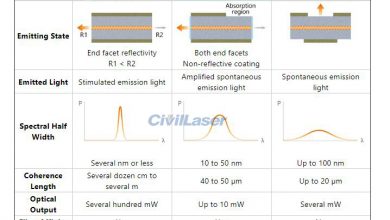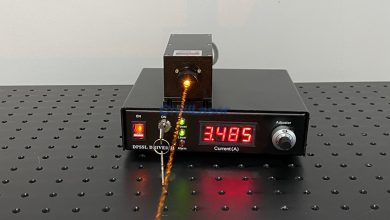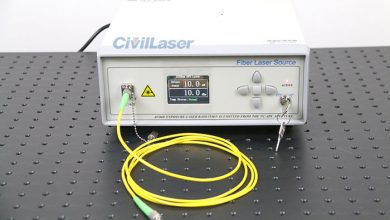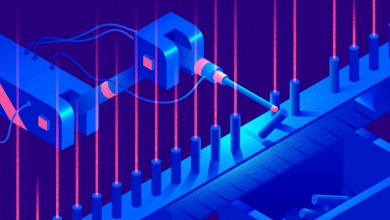Laser Technology
The Difference Between FP and DFB Lasers
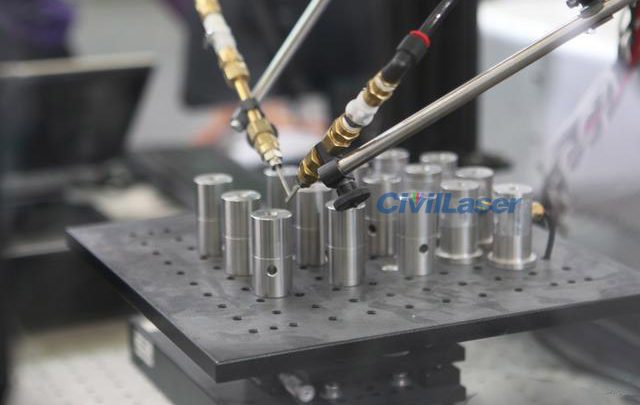
Recently, many colleagues reported that customers need to know more about the technical knowledge of FP and DFB lasers, and what is the difference between them. In order to explain to customers conveniently, briefly summarize the knowledge of FP and DFB lasers.
FP Laser
FP (Fabry-perot) laser is a semiconductor light-emitting device that emits multi-longitudinal mode coherent light with an FP cavity as a resonant cavity. FP lasers are mainly used for low-rate and short-distance transmission. For example, the transmission distance is generally within 20 kilometers, and the speed is generally within 1.25G. The FP has two wavelengths, 1310nm/1550nm.
There are also some manufacturers in the market who use FP devices to make gigabit 40km modules in order to reduce costs. In order to achieve the corresponding transmission distance, the transmitted optical power must be increased. Long-term work will make the products of the product aging in advance and shorten the use. life. According to the engineer’s suggestion 1.25G 40km dual-fiber optical module, it is more secure to apply DFB devices!
FP laser performance parameters:
1) Working wavelength: the central wavelength of the spectrum emitted by the laser.
2) Spectral width: the root mean square spectral width of the multi-longitudinal mode laser.
3) Threshold current: When the operating current of the device exceeds the threshold current, the laser emits a laser with good coherence.
4) Output optical power: the optical power emitted by the laser output port.
Its typical parameters are shown in the table below:
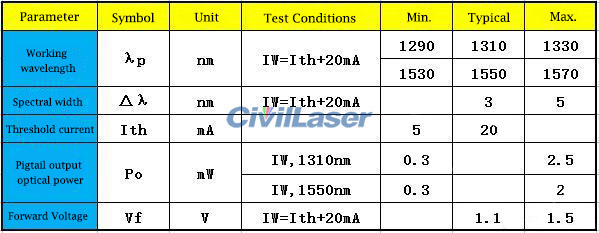
DFB Laser
The DFB laser uses a grating optical filter device based on the FP laser so that the device has only one longitudinal mode output. DFB (Distributed Feedback Laser) generally uses two wavelengths of 1310nm and 1550nm, which are divided into cooling and non-cooling. They are mainly used for high-speed medium and long distance transmission, and the transmission distance is generally more than 40 kilometers.
DFB laser performance parameters:
1) Working wavelength: the central wavelength of the spectrum emitted by the laser.
2) Side mode suppression ratio: the power ratio of the main mode of the laser to the maximum side mode.
3) -20dB spectral width: the spectral width is reduced by 20dB from the highest point of the laser output spectrum.
4) Threshold current: When the operating current of the device exceeds the threshold current, the laser emits a laser with good coherence.
5) Output optical power: the optical power emitted by the laser output port.
Its typical parameters are shown in the table below:
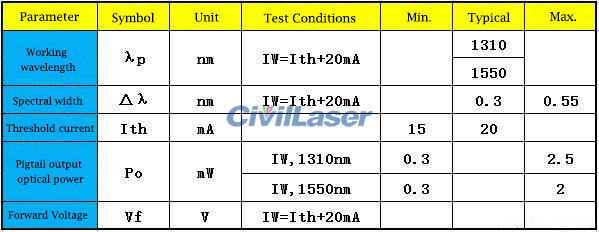
As can be seen from the above table, the main difference between FP and DFB lasers is the difference in spectral width. The spectral width of DFB lasers is generally narrow and is a single longitudinal mode of distributed negative feedback. The spectral width of the FP laser is relatively wide, and it is a multi-longitudinal mode laser. They also differ in their operating wavelength, threshold current and forward voltage.
Thanks everyone for reading! Hope these sharings will give you some insight into FP and DFB lasers! CivilLaser welcomes the elites in the same industry to discuss together, and also hopes to offer your valuable insights and suggestions, and hope to make progress together with you!
